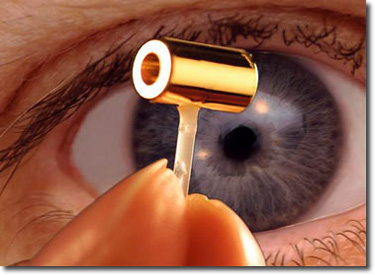Jul 24 2007
Researchers at Lawrence Livermore National Laboratory (LLNL) have successfully conducted an important round of successful laser experiments at the National Ignition Facility (NIF), validating key computer simulations and theoretical projections relevant to the plasma and X-ray environment necessary to achieve ignition.
NIF, which is more than 80 percent complete, is a 10-story building in which 192 laser beams are focused on a tiny target inside a 30-foot diameter aluminum-lined chamber. Eight beams already have been commissioned. When fully operational (currently scheduled for mid-2009), NIF will be used to study and achieve ignition, resulting in a brief burst of energy that is greater than was used in its creation. Ignition is a long-sought achievement that has never occurred under controlled conditions in a laboratory setting.
The series of experiments is described in a Nov. 18 Physical Review Letters article, whose lead author was the Lab’s Eduard Dewald.
NIF’s first four beams were fired into various-sized gold-plated cylinders known as hohlraums, only a few millimeters long. The laser beams entered the hohlraums through a single hole at one end. In the future NIF ignition experiments, the deuterium-tritium fuel capsule will be placed inside a larger hohlraum. All 192 NIF laser beams will then heat the interior of the hohlraum, through holes on both ends, creating X-rays that ablate (burn off) and implode the capsule to ignition.
Although the beams of high-power ultraviolet laser light only lasted a maximum of nine nanoseconds (billionths of a second), that’s considered long to ignition researchers. Such sustained pulses are a capability that is unique to NIF.
Various diagnostic instruments measured the X-ray spectra and radiation temperatures inside the hohlraum, and imaged the X-rays that were sufficiently energetic to exit through the hohlraum wall. Snapshots of the X-rays provide a clear picture of how the plasma inside the hohlraum evolves.
One goal of these experiments was to demonstrate that NIF, even at this very early stage, is capable of spanning the full range of hohlraum radiation temperatures needed for ignition. The goal was clearly achieved with a series of different-sized hohlraums irradiated with two-nanosecond laser pulses of about eight trillion watts, which produced radiation temperatures in agreement with both theoretical expectations and previous experience from other facilities.
Additionally, the researchers wanted to fire some of these “very long” laser pulses into relatively small hohlraums in order to test computational and theoretical models of when a given hohlraum becomes extremely filled with plasma.
The NIF experiments validated those predictions, with multiple diagnostic instruments registering results almost exactly as expected. These findings are important because they confirm that the larger hohlraums that will be used for NIF ignition experiments should develop plasma more slowly, an important factor in controlling proper symmetry of the implosion necessary for ignition.
 A tiny gold-plated cylinder called a hohlraum holds the deuterium-tritium fuel capsule in the National Ignition Facility target chamber, where the energy from 192 high-powered lasers is converted to thermal X-rays. The X-rays heat and ablate the plastic surface of the ignition capsule, causing a rocket-like pressure on the capsule and forcing it to implode and ignite.
A tiny gold-plated cylinder called a hohlraum holds the deuterium-tritium fuel capsule in the National Ignition Facility target chamber, where the energy from 192 high-powered lasers is converted to thermal X-rays. The X-rays heat and ablate the plastic surface of the ignition capsule, causing a rocket-like pressure on the capsule and forcing it to implode and ignite.
“This was a very clear demonstration that NIF is indeed on the path toward ignition,” said Eduard Dewald, the physicist who led the series of seven experiments in September 2004. “The precise data we were able to acquire proved in real terms that the computer projections are remarkably accurate in their predictions. Furthermore, NIF is capable of producing high-quality laser beams that met nearly all of our design specifications.”
The researchers point out that their results can be extrapolated to higher laser energies by "applying a simple analytic model for radiation temperature limits." In other words, even though the initial experiments were limited to the first four NIF beams and only about 1 percent of NIF's ultimate 1.8 megajoule energy output, the scientists now have good reason to anticipate hohlraum experiments that are hotter, larger and of longer duration when all of NIF's 192 beams are fully operational.
“What amazed me most was that this was the first time in my 25 years of doing laser experiments here at the Lab, that everything proceeded absolutely perfectly the first time we tried it,” said Larry Suter, principle designer of the experiments and co-author of the journal article. “It’s a real testament to the effort and the quality control of the NIF team.”
The series of experiments was the first hohlraum campaign on NIF and part of a larger four-campaign effort, coordinated by LLNL’s Nino Landen, and involving researchers from LLNL, Los Alamos National Laboratory, the United Kingdom’s Atomic Weapons Establishment (AWE), and General Atomics.
Founded in 1952, Lawrence Livermore National Laboratory has a mission to ensure national security and apply science and technology to the important issues of our time. Lawrence Livermore National Laboratory is managed by the University of California for the U.S. Department of Energy’s National Nuclear Security Administration.